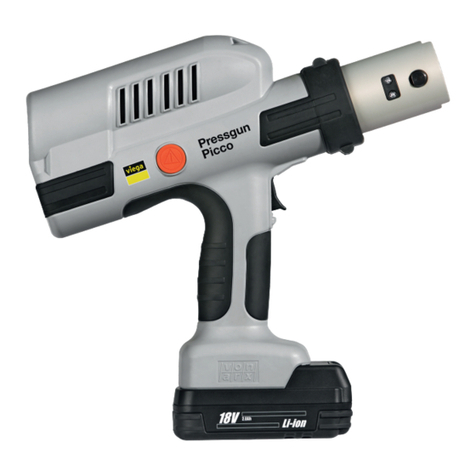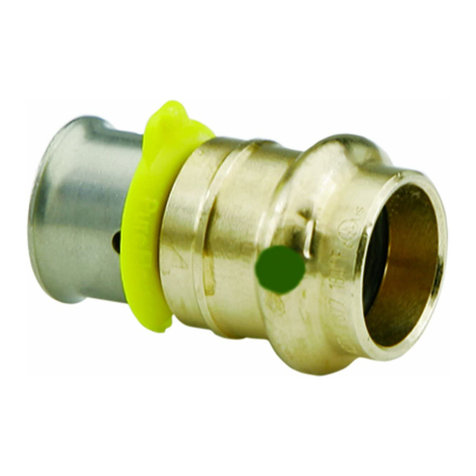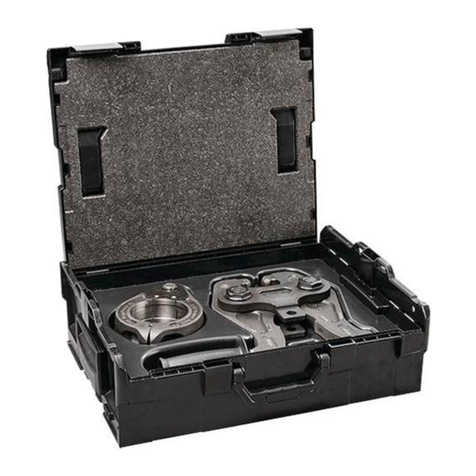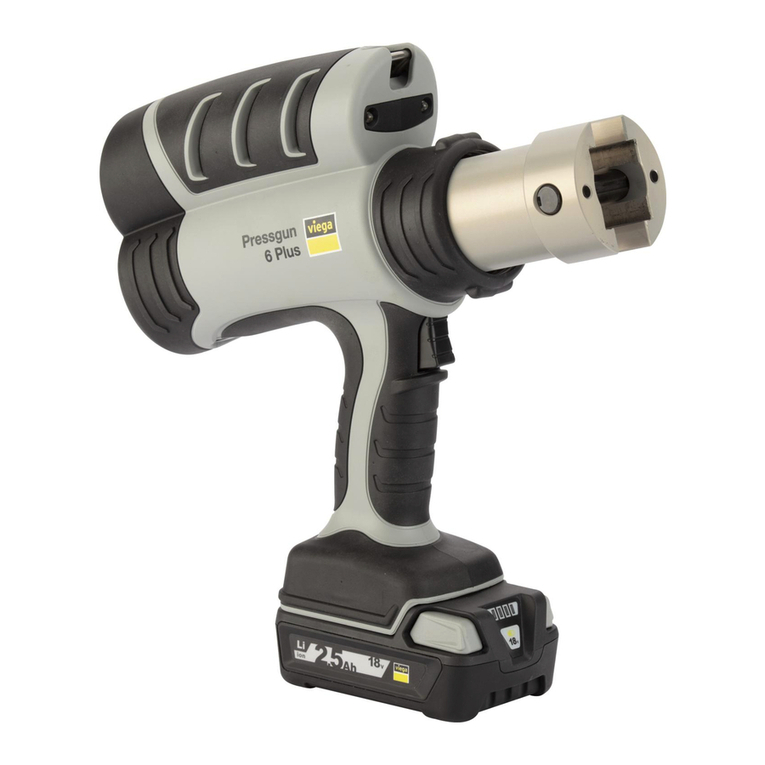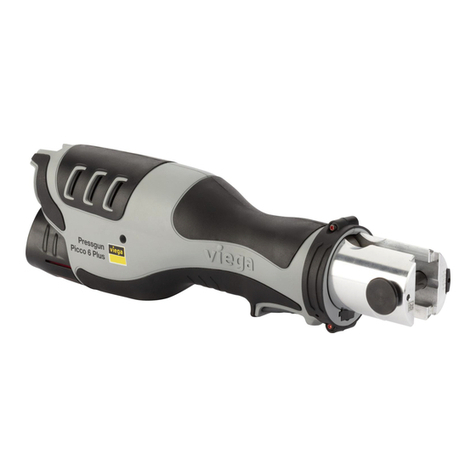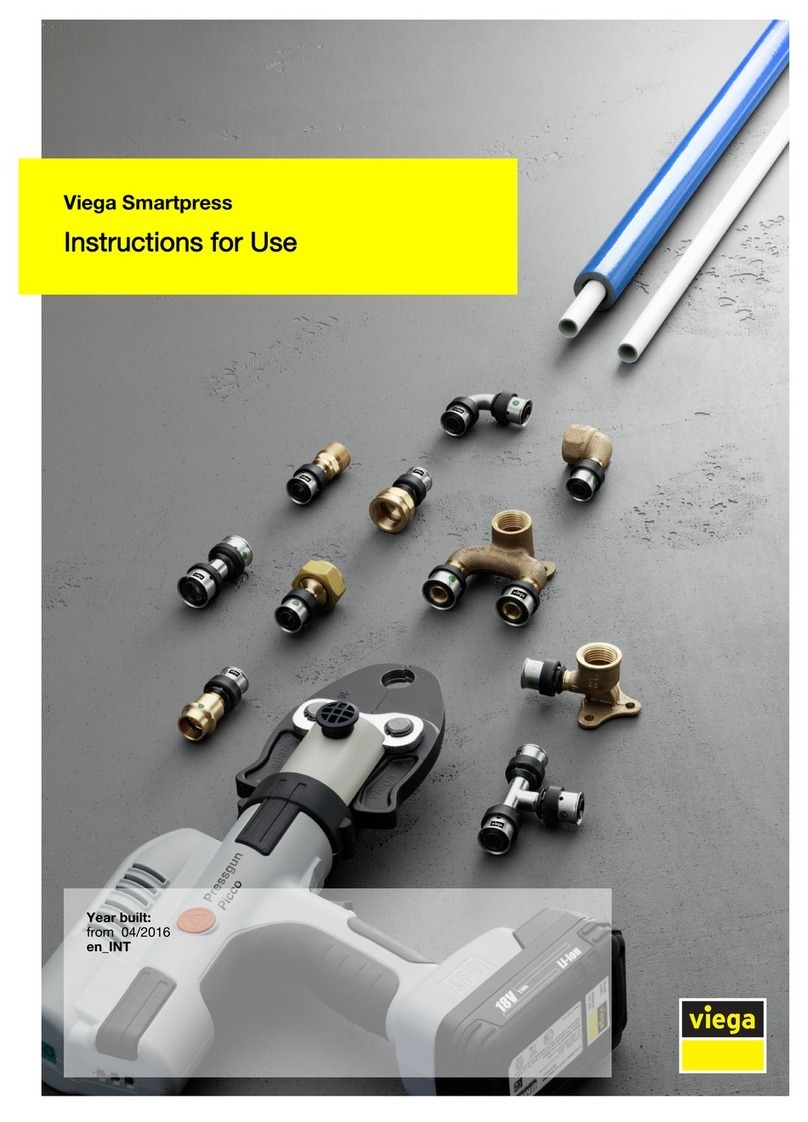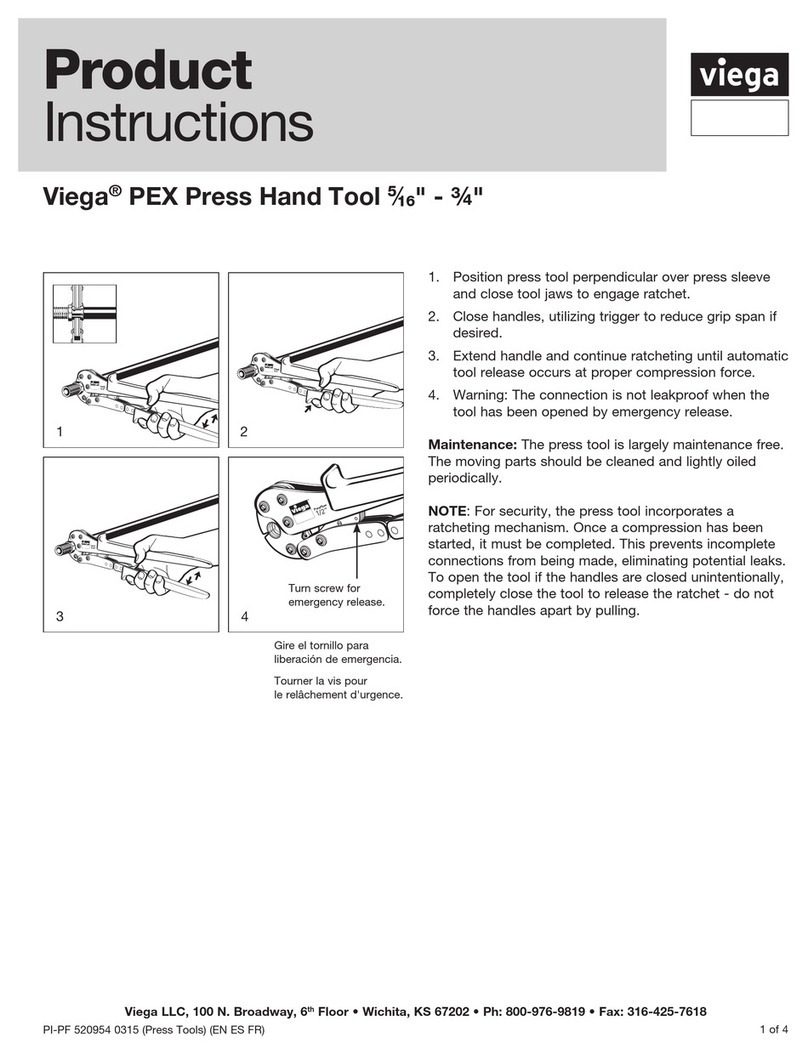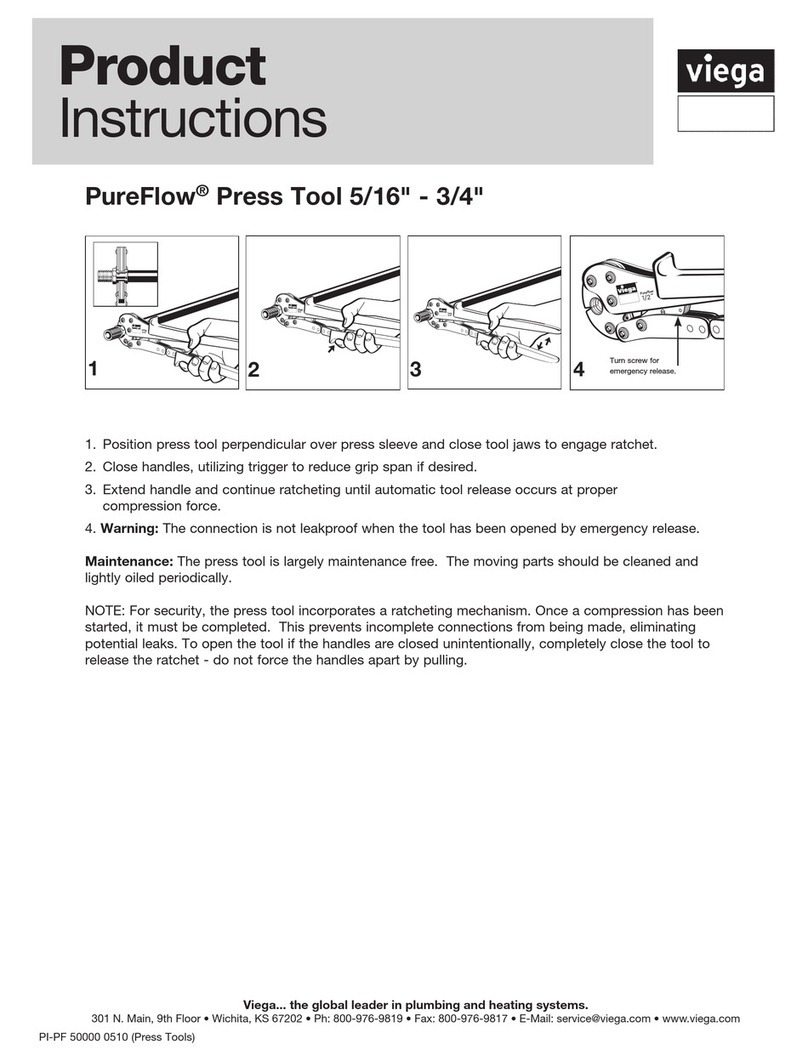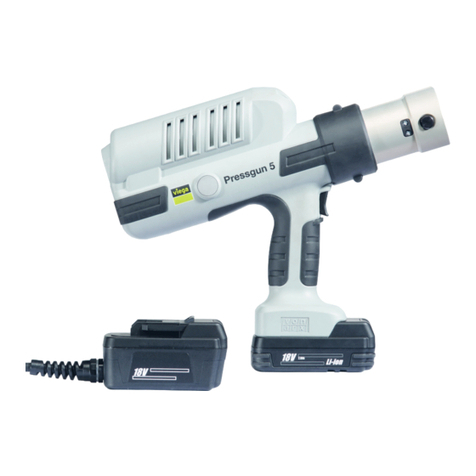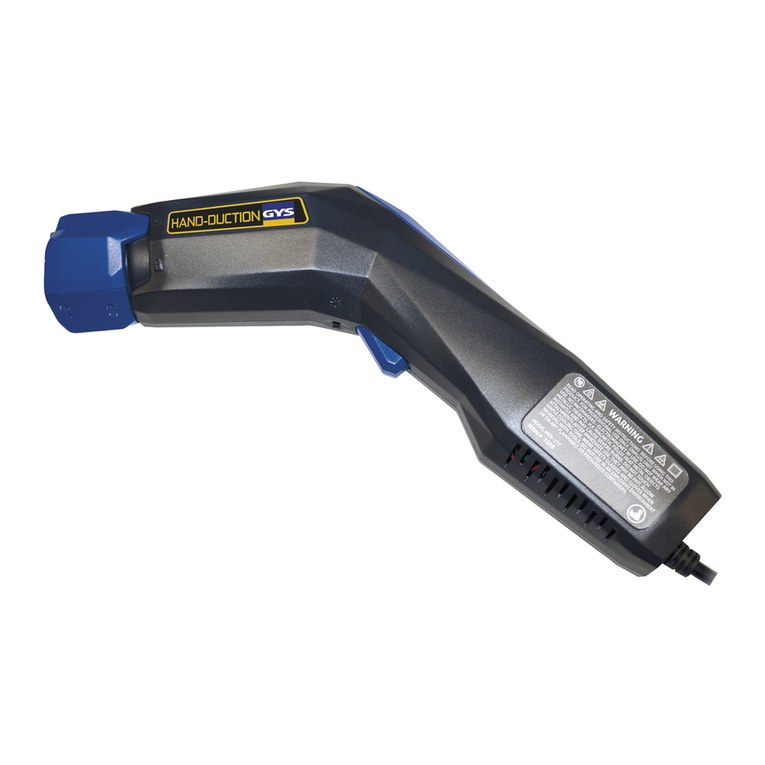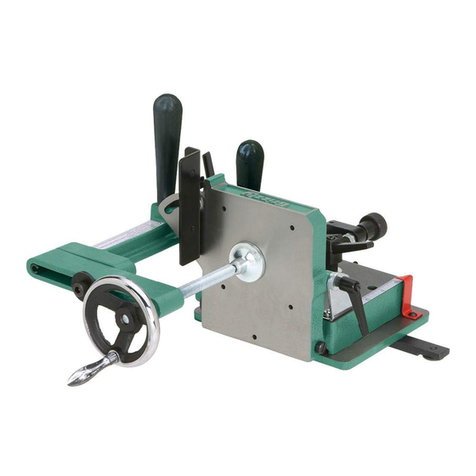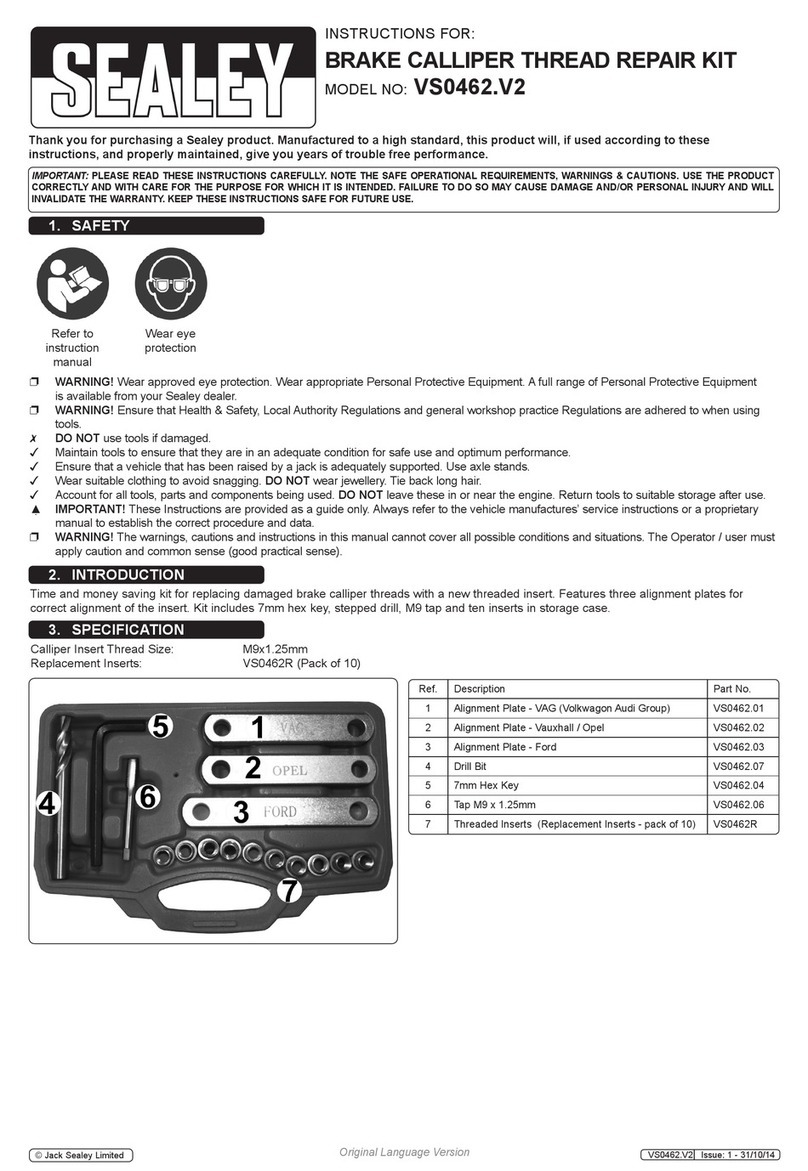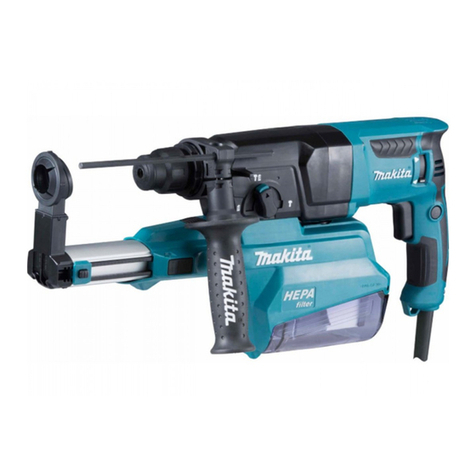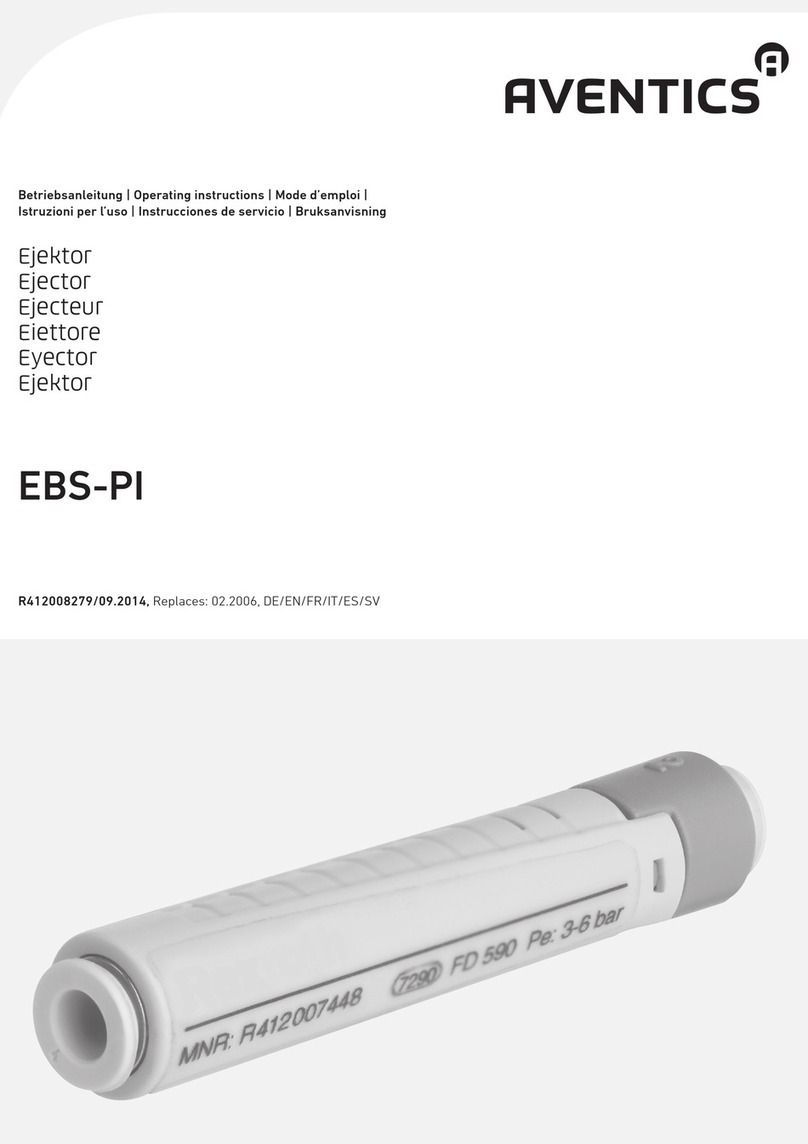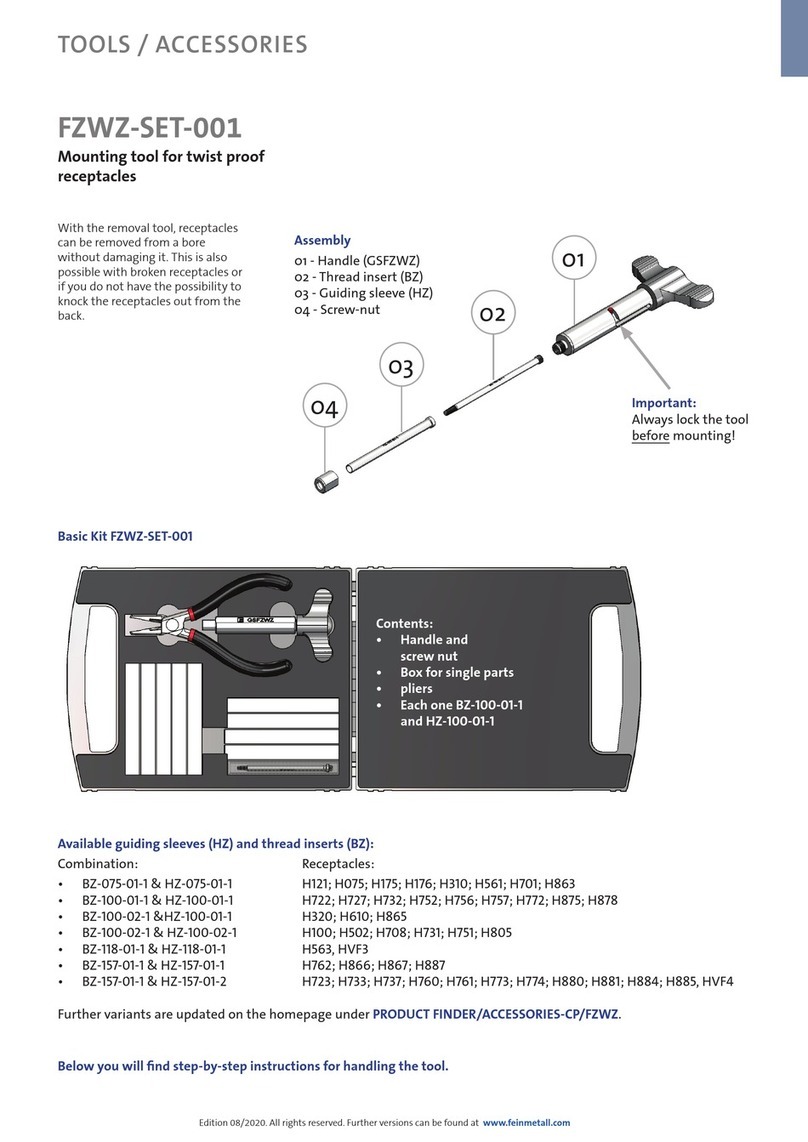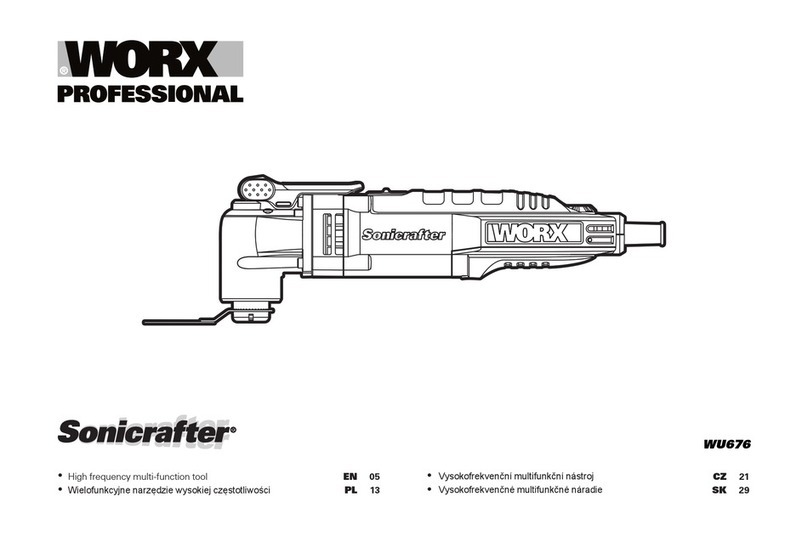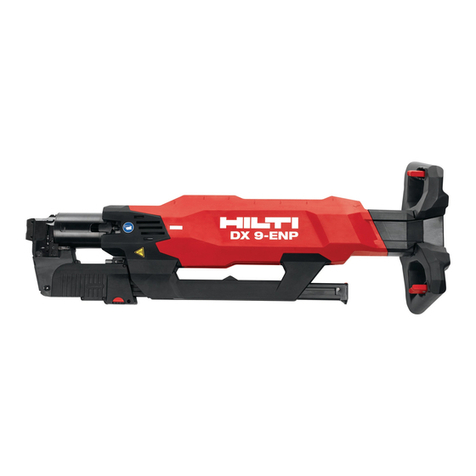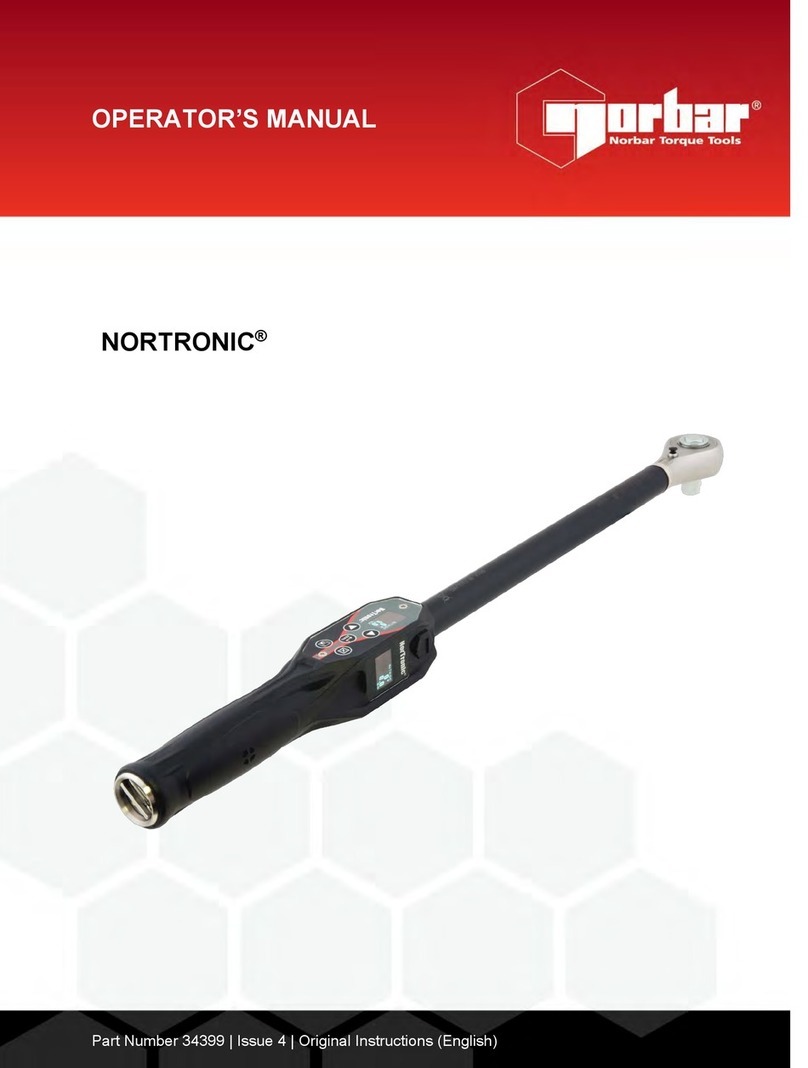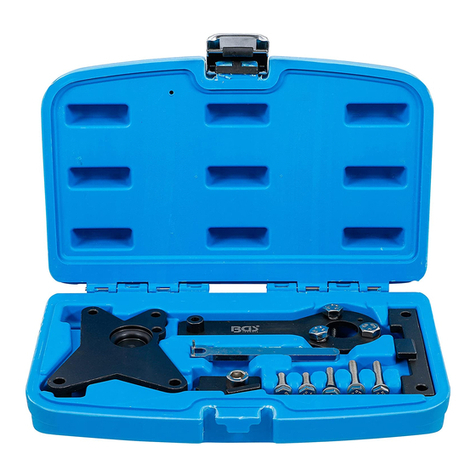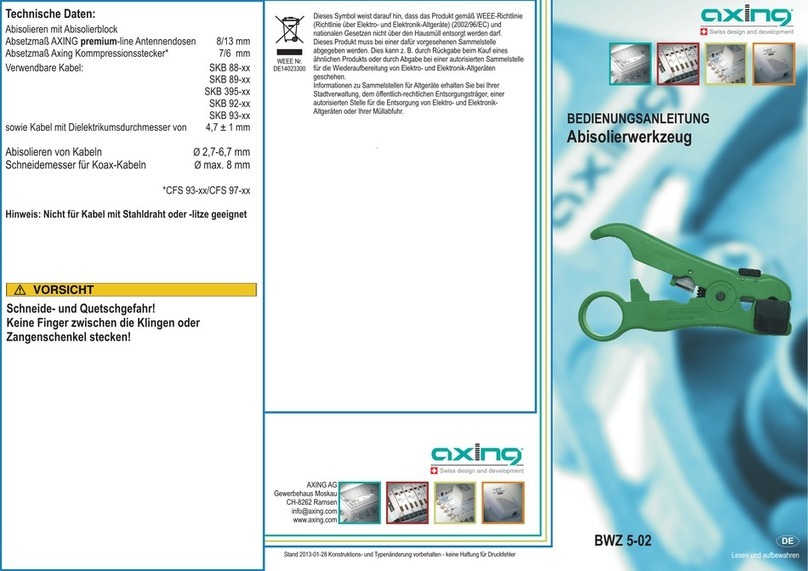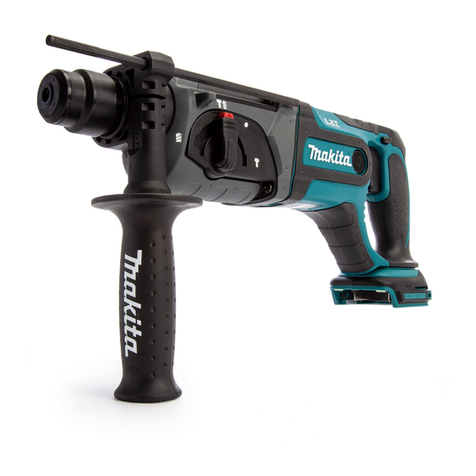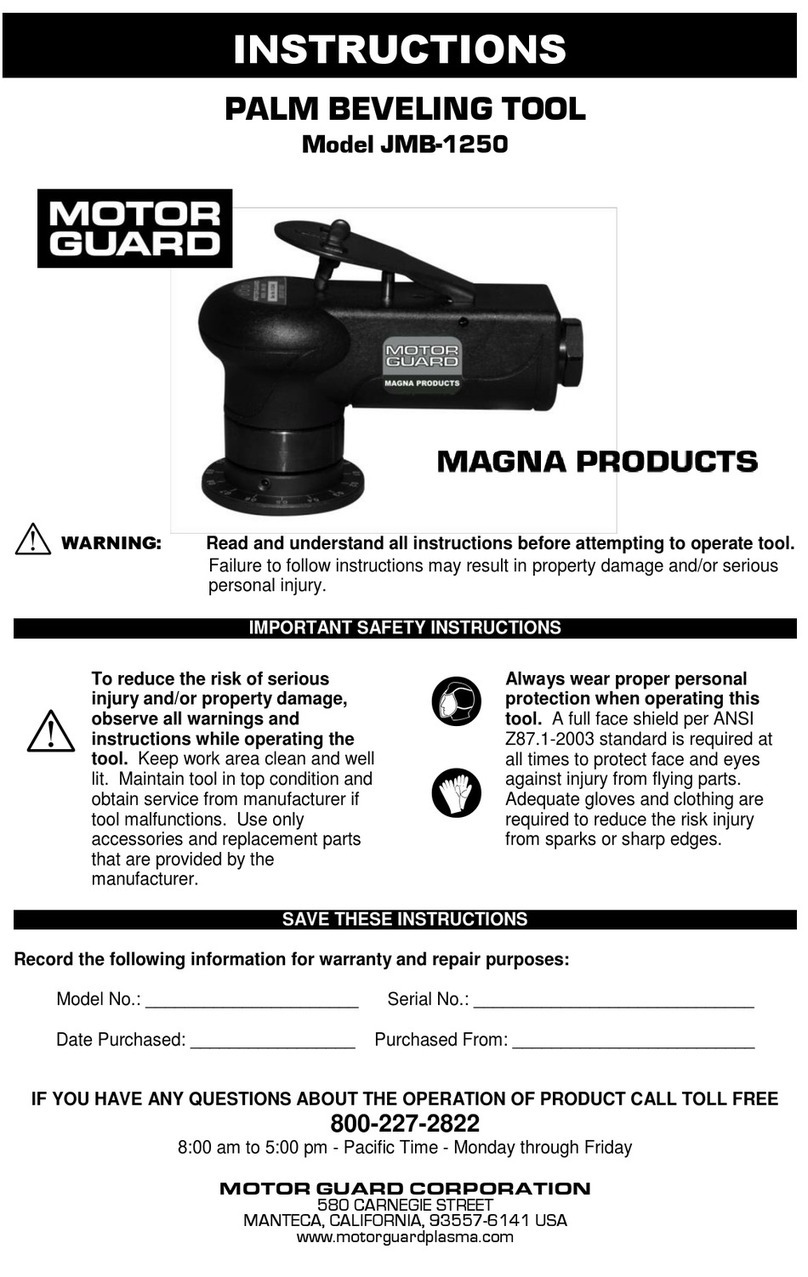b) Do not touch earthed surfaces, for example of pipes, heaters,
cookers, and fridges. Increased risk of electric shock if your body is
earthed.
c) Keep electrical tools out of the rain and protect them from moisture.
Increased risk of electric shock if water gets into an electrical tool.
d) It is forbidden to use the cable to carry the electrical tool or hang it
up, or to remove the plug from the socket by pulling at the cable. Keep
the cable away from heat, oil, sharp edges, or moving equipment parts.
Damaged or tangled connection cables increase the risk of electric
shock.
e) When using electrical tools out of doors, only use extension cables
suitable for out-of-door use. Using extension cables suitable for out-of-
door use reduces the risk of electric shock.
f) If you cannot avoid using the electrical tool in a damp environment,
use a residual-current circuit breaker. Using a residual-current circuit
breaker reduces the risk of electric shock.
a) When working with an electrical tool, be attentive, mind what you are
doing, and use your common sense. Do not use an electrical tool when
you are tired or under the influence of drugs, alcohol, or medication.
When using an electrical tool, one second of carelessness may result in
severe injury.
b) Wear personal protective equipment. Always wear protective glasses.
Depending on the type and application of the electrical tool, you can
reduce the risk of injury by wearing personal protective equipment such
as dust mask, anti-slip safety shoes, hard hat or hearing protection.
c) Avoid accidental startup of the electrical tool. Ensure that the elec-
trical tool is switched off before you connect it to the mains and/or the
battery, take it in your hands or carry it. Having your finger on the switch
while you carry the electrical tool, or connecting it to the mains while it
is switched on may result in accidents.
d) Before switching the electrical tool on, remove adjusting tools or fork
spanners. An adjusting tool or wrench in a rotating device component
may cause injuries.
e) Avoid abnormal body postures. Ensure safe footing and a good bal-
ance at all times. This helps you to control the electrical tool if an unex-
pected situation occurs.
f) Wear suitable clothing. Do not wear loose clothing or jewellery. Keep
hair, clothes and gloves away from moving components. Loose
clothing, jewellery or long hair may get caught in moving components.
g) If the tool is equipped for the connection of dust extraction and col-
lection devices, ensure that these devices are mounted and are used
properly. Using dust extraction may reduce the hazards posed by dust.
3) Safety of persons
Product information
Pressgun Picco press machine set 7 from 22
